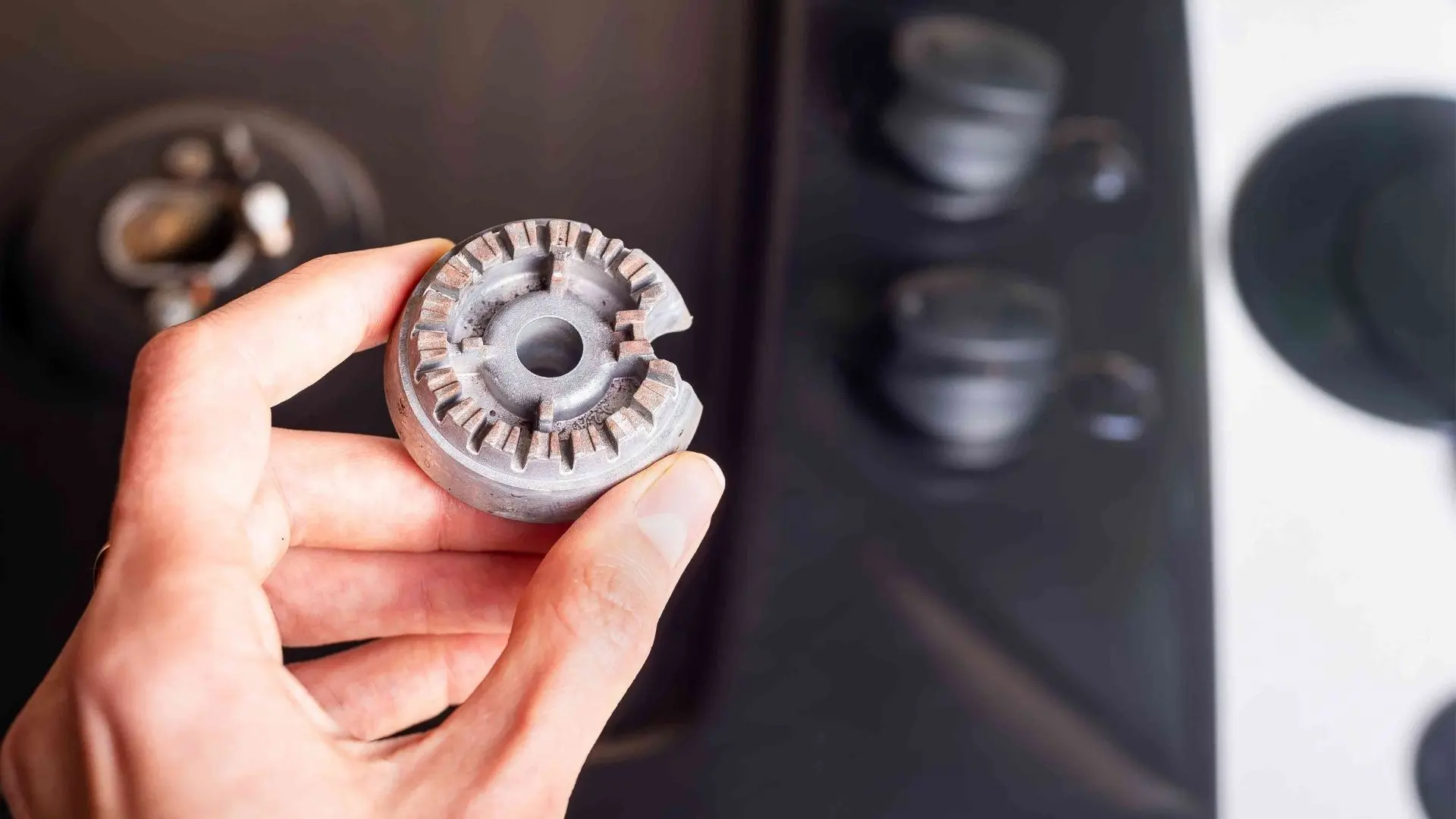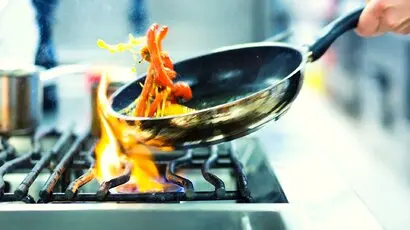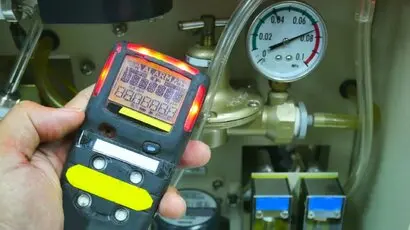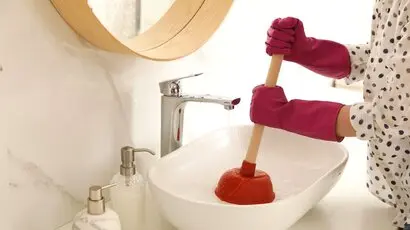Gas Stove Maintenance Tips
Want to know how you can keep your gas stove in good condition? Check out our simplified guide comprising some practical tips for maintaining gas stoves at home.
So, you’ve got yourself a new gas stove, but you’re not sure how to keep it spick and span over the long haul? Don’t worry, you’re not alone.
Or is your old stove producing weaker flames? Either way, you must maintain the furnace regularly to ensure it performs consistently.
If you don’t use a gas stove often, keeping up with its maintenance might seem a bit daunting. Unlike some smaller kitchen gadgets, gas stoves have multiple parts and attachments that need regular care to function optimally.
We’ve compiled this handy guide with easy maintenance tips to help you keep your gas stove in top shape. So, let’s dive in and get started!

When cleaning a gas stove, dish soap and vinegar are some of the handiest and safest options. You can use it anytime since you always have it at home. While vinegar is a non-toxic and mild acid, dish soap is an alkaline product of medium strength.
Combined with these mild cleaning solutions, they can dissolve almost any build-up on the stove components or the burner grates while ensuring all the parts remain intact. In comparison, harsher chemicals can potentially damage several elements of the gas stove, add toxicity to the details unnecessarily, or even etch the stove.
This technique is ideal for all your regular stove cleaning needs. For the best results, mix vinegar and soap with hot water before applying the solution to the stove.
A gas stove’s burner channels direct natural gas from the valve below each gas burner to form an even flame ring under the pans and pots. By efficiently distributing the flame on the base, they can ensure that all meals are cooked evenly.
However, these channels often get clogged with regular use, which might prevent the gas from distributing the flame evenly and is a huge fire hazard. Maintaining the burner caps and channels ensures your gas stove works efficiently.
In the cleaning procedure, remember that you must only use a straw cleaner or a pipe cleaner. These are designed to clean such narrow metal channels smoothly.
Also, be careful not to use kebab sticks, toothpicks, or tools to clean burner channels. These can cause the wood to break off, creating many problems for the stove.
This cleaning routine might sound tedious, but it’s another highly dependable method to ensure your stove works perfectly. We’d suggest trying out this procedure for a month to witness its effectiveness. And you’ll surely understand that the effort was worth it.
Start by using a cleaning solution on your stove once it’s cooled down. If there are any spills or drips, it’s best to wipe them up promptly when it’s safe to do so.
Plus, you should scrub the grates and the surface every week to ensure that too much grease doesn’t accumulate therein.
The third and most rigorous part of this cleaning process is soaking and scrubbing every piece of the stove. Naturally, you’ll need to do it sparingly, twice a year or once a month if required.
At first glance, pouring water onto your stove might seem helpful, but it’s actually a recipe for trouble. Water can seep into the gas lines and lead to electrical problems. Always avoid pouring water on your gas cooktop.
We’d also recommend following the same rule for electric stoves, though many people often try this to clean it up faster.
Instead of pouring water, you can try cleaning the stove using a mild scrubbing agent. You’ll often notice deposits of burnt-on crud on a gas stove, and it may not be easy to scrub it off. In such cases, it’s best to use an abrasive powder so the deposit can move along, but you must be careful not to etch the enamel on the grate and stove.
The most reliable mild scrubbing agents are the Bar Keeper’s Friend cleaner, salt, and borax. But be careful not to use a cleaner for bathrooms such as Comet.
When the grates are not in use, you can utilise the opportunity to scrub the stove’s surface underneath it. Note that this task can seem challenging as the character gets very dirty.
Under the grate, you’ll find a giant drip pan that catches all the drips, grease and spills produced during cooking. It’s essential to clean this pan regularly to prevent grease build-up, which poses the risk of creating a grease fire.
To clean the lower surface of the stove, start by spraying vinegar or a mild foaming cleanser on the entire area. Allow it to sit for some time, then wipe down the whole surface with a rinsed sponge. You can scoop up the crumbs and piles of partially liquified grease quickly.
When the surface seems smoother after you’ve wiped it down, scrub it using a soapy sponge. Ensure you don’t let the sponge leave much of the puddling since you must minimise water dripping into the stove.
After you’re done, clean the area with another rinsed and clean sponge, and finally, let the area dry up.
Most commercial and domestic gas stoves come with a large enamelled cooking grate on top of the stove instead of the individual grates in electric stoves. Unlike the latter, the burners of a gas stove need space between the pan bottom and the flame to ensure efficient cooking.
So, for cleaning one or more gas stove grates, start by soaking them in soapy, hot water for up to 40 minutes. It will help if you flip the cooking grates halfway through since the grates of most stoves are too large to be soaked in the sink at once.
After the grates are soaked, use a sponge for scrubbing and light abrasive power to remove the cooked-on grit deposited over time. You can also use soapy water.

As we’ve reached the end of our guide, we hope you’ll find it simpler to keep your gas stove in good condition.
Also, keep an eye on the gas lines for any possible gas leaks, as these can be highly hazardous and, in some cases, even fatal. Contact our team if you are experiencing a gas-related emergency in Melbourne. We can make an appointment and offer fast and affordable same-day services.
As a precaution, ensure you don’t use any harsh cleaner to wipe down any part of the stove, as it can have corrosive effects on that part. You should also ensure your hands are safe while handling the tools or cleaning agents as they impact the skin.
With that, we’ll sign off for today. Till next time, take care!
Not sure how to detect a gas leak from your stove at home? Don’t worry; we’ve got you covered with our comprehensive and straightforward to follow guide on how to identify a gas leak from your kitchen.
Not sure whether there’s a gas leak or you’re overthinking? The most important thing you should know is how to detect gas leaks quickly and what to do if one occurs.
Want to know how to deal with clogs in any drain effectively? Check out our comprehensive guide for some handy tips and tricks to keep your pipelines and drains clean.


